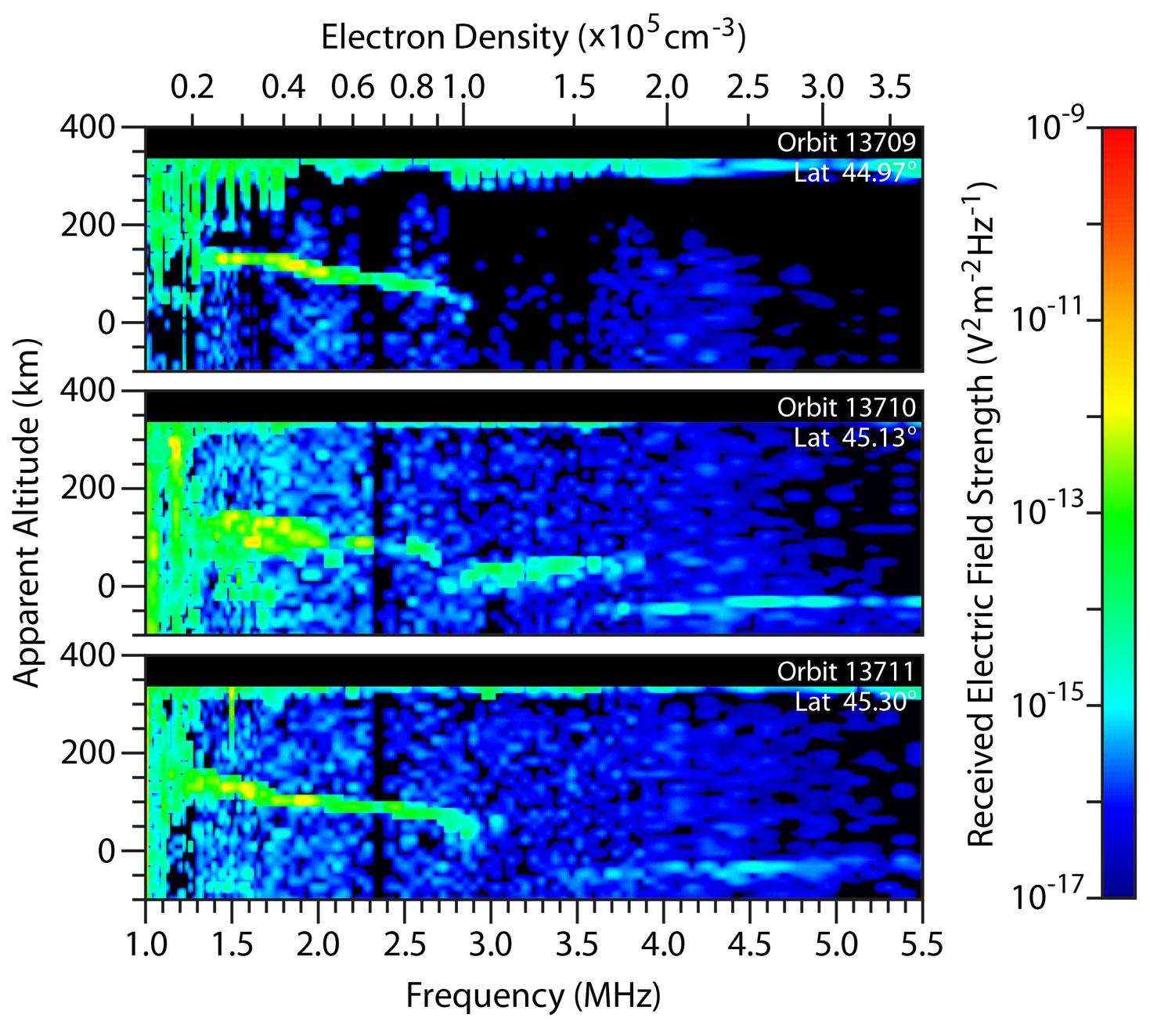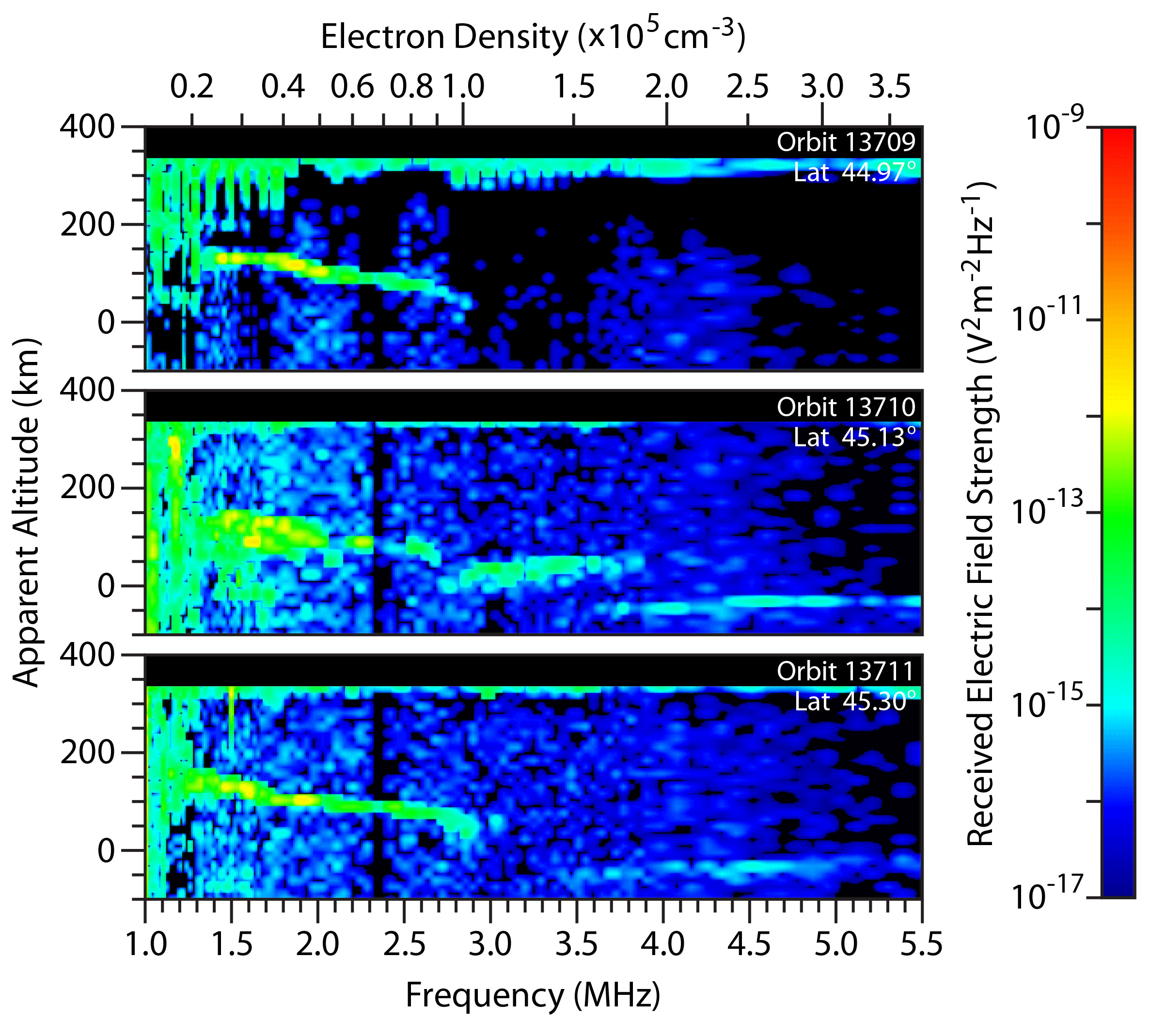Change in Mars’ Mid-Latitude Ionosphere After Comet Flyby

| Credit | ASI/NASA/ESA/JPL/Univ. of Rome/Univ. of Iowa |
|---|---|
| Language |
|
These three plots are spectrograms portraying data from radar sounding of the Martian ionosphere midway between equator and north pole at three different times on Oct. 19 and 20, 2014. The middle plot shows effects attributed to dust from comet C/2013 A1 Siding Spring, which passed within about 87,000 miles (139,500 kilometers) of Mars that day. The data are from the Mars Advanced Radar for Subsurface and Ionospheric Sounding (MARSIS), an instrument on the European Space Agency's Mars Express orbiter.
The horizontal axis is the radio-wave frequency of pulses emitted by MARSIS. The vertical axis is the altitude above the Martian surface, as estimated based on the time delay between transmitting the pulse and receiving its reflected signal. The apparent altitude has been computed with an assumption that the radar signal propagates at the speed of light, uncorrected for dispersion and other effects. Increasing intensity is indicated by color-coding from blue to red, as shown by the scale on the right.
The normal ionospheric reflection that is expected on the dayside can be seen extending up to about 2.8 megahertz on all three spectrograms, corresponding to an electron density of about 100,000 electrons per cubic centimeter. The top spectrogram shows conditions about eight minutes before the comet's closest approach.
The middle spectrogram shows conditions about seven hours later, when a temporary layer of enhanced electron density had formed within the ionosphere. It extends to very high frequencies, from about 2.8 to 3.8 megahertz, and corresponds to an electron density of about 200,000 electrons per cubic centimeter. This layer of greatly enhanced ionization is at an altitude below the normal peak in the ionosphere. By comparison with the ground reflection, which can be seen at frequencies above 4 megahertz, the layer of greatly enhanced ionization is estimated to be at an altitude of about 50 to 60 miles (about 80 to 100 kilometers).
The passing comet was accompanied by a cloud of dust particles released from the comet's nucleus. Researchers attribute the temporary layer to heating caused by dust particles hitting the Martian atmosphere at high velocity.
The data are from the Mars Advanced Radar for Subsurface and Ionospheric Sounding (MARSIS), an instrument on the European Space Agency's Mars Express orbiter.
NASA and the Italian Space Agency jointly funded MARSIS.

